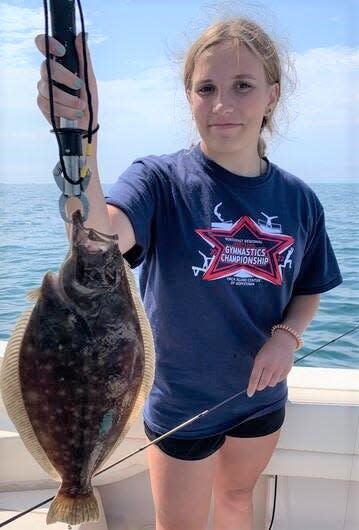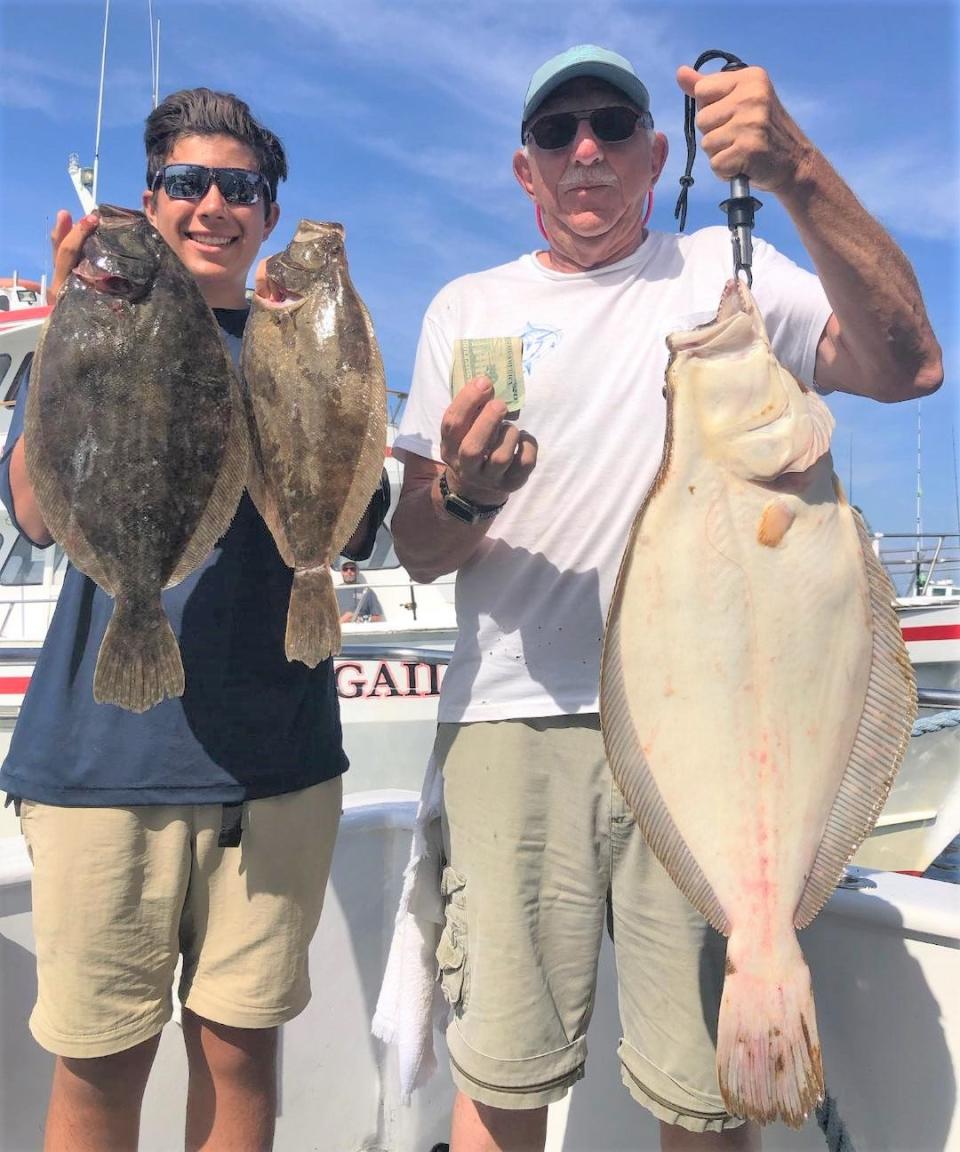Fishing Report: Summit sets table for strategic plan
The National Oceanic and Atmospheric Administration Fisheries and the Atlantic States Marine Fisheries Commission, which regulates fisheries coastwide in state waters within the 3-mile limit, last week released the final report from the 2022 National Saltwater Recreational Fisheries Summit. The summit garners stakeholder input that is used to direct NOAA’s strategic planning for recreational fishing for the next five years.
The two-day meeting brought together more than 175 recreational anglers, managers, scientists and industry representatives to discuss important recreational issues, including climate change, balancing ocean uses (fishing, offshore wind and marine aquaculture), data and management.

The summit report did a good job documenting key discussions. The report fell short, however, in taking the input, particularly the cross-cutting themes common in all four topic sessions, and converting them to major initiatives to reinvigorate and update NOAA procedure, process and policy agendas in recreational fishing.
The four cross-cutting themes noted in NOAA’s report are the Human Dimension; Shifting Data Needs; Tradeoffs in Management, Conservation and Opportunity Management (flexibility); and Community Engagement and Trust. Not that all of the recreational fishing community agreed how to proceed with these themes, but from the perspective that all seemed to agree on that these were key areas of focus.
Fishing Report: 'Old Salts,' 'Young Guns' talk striped bass strategies
For example, under the umbrella theme of moving forward with a new appreciation for the "human dimension," one would think we, as a recreational fishing community, need to differentiate ourselves from commercial fishing in that the driving force is not to catch and kill fish necessarily, the intrinsic value of fishing, the opportunity of caching a fish all leading to the desire to grow fisheries to abundance so there are more of them in the water for all of us to catch, eat and/or release. So, no major plan to communicate and foster an understanding of this human dimension was laid out in preliminary action items.
No plan to identify data-poor stocks, particularly in light of climate impacts, and no plan to develop acceptable standards for community science projects that can supplement existing data. The report also referenced Recreational Fishing Reform and Opportunity Management (flexibility) as important issues as well as the cross-cutting theme of Community Engagement and Trust.
RI sports fishermenare forced to say goodbye to iconic shark after unprecedented ban
The biggest need not addressed is coming up with a plan for our nation’s fisheries to become climate ready. There is no mention of a master plan that is being developed to do this. NOAA does relate it will undertake an extensive review of the 2015 National Saltwater Recreational Fisheries Policy with the aim of issuing an updated policy in 2023.
Where’s the bite?
Striped bass and bluefish. “The striped bass bite is still outstanding, particularly at Block Island with eels,” said Matt Conti of Snug Harbor Marina in South Kingstown. Noah Ialongo of Quaker Lane Bait & Tackle in North Kingstown said: “The striped bass bite off Newport and at Block Island continues to be very good." Declan O’Donnell of Breachway Bait & Tackle in Charlestown reported: "Lots of school bass to slot size are being caught in Rhode Island salt ponds and off the breachways in South County. Much larger fish are out at local reefs and at Block Island. Fish are feeding on all sorts of bait, including sand eels, scup, seabass, squid and shrimp. Live eels remains the top producer for large bass but they are also being caught trolling or casting lures.” Dave Henault of Ocean State Tackle in Providence said: “This time of year, with the warming water, the striped bass bite has moved somewhat to a dawn-and-dusk/nighttime bite. The bite is strong out in front of Newport and customers continue to catch some 50-pound fish at Block Island. The bass are feeding on sand eels, so anglers are using soft plastic, needle fish lures with a good bite off Narragansett Beach and Point Judith. And both small and large bluefish are being caught just about everywhere.”

Summer flounder (fluke), black sea bass and scup. Summer flounder fishing continues to improve but is not booming. The Rhode Island regulation is four fish/person/day with a minimum size of 18 inches. Capt. Tom Pelletier of Quaker Lane Bait & Tackle in North Kingstown reported: “The bite off the Sakonnet River for fluke has been OK with a very strong black sea bass bite there. The black sea bass bite along our southern coastal beaches has been improving with customers catching fluke around the Newport and Jamestown Bridge, but overall fluke fishing is not great. The fluke bite around Block Island remains spotty." Matt Conti of Snug Harbor Marina said: “The fluke bite along the southern coastal shore from Watch Hill to Point Judith is actually a bit better than Block Island if conditions are right [with wind and tide in line.” O'Donnell said: “Reports on fluke fishing have been mixed locally with some people doing well locally and others struggling to find the fish. ... You still need to work to find the fish.” Some nice-sized 20-inch-plus black sea bass continue to be caught off the Sakonnet River and in front of Newport this week. The scup bite remains very strong anywhere there is structure like ledges and jetties and water movement.
Offshore. “The school bluefin tuna bite has been very spotty, but giants are being caught," Conti said. "The yellow fin tuna bite was good this week at the Horns and the Dump.” Angler John Stavrakas said: “We were able to put three small yellowfin in the box trolling around the Dump Sunday].” Recreational fishing regulation measures for Georges Bank cod (cod caught south of Cape Cod) have changed. The minimum size is 22 inches with a maximum size of 28 Inches, so we now have a slot limit. The possession limit is five fish/person/day with a closed season May 1 to July 31 with an open season Aug. 1 to April 30.
Dave Monti holds a captain’s master license and charter fishing license. He serves on a variety of boards and commissions and has a consulting business that focuses on clean oceans, habitat preservation, conservation, renewable energy and fisheries-related issues and clients. Forward fishing news and photos to dmontifish@verizon.net or visit noflukefishing.com.
This article originally appeared on The Providence Journal: NOAA releases final saltwater report, sets table for strategic plan

